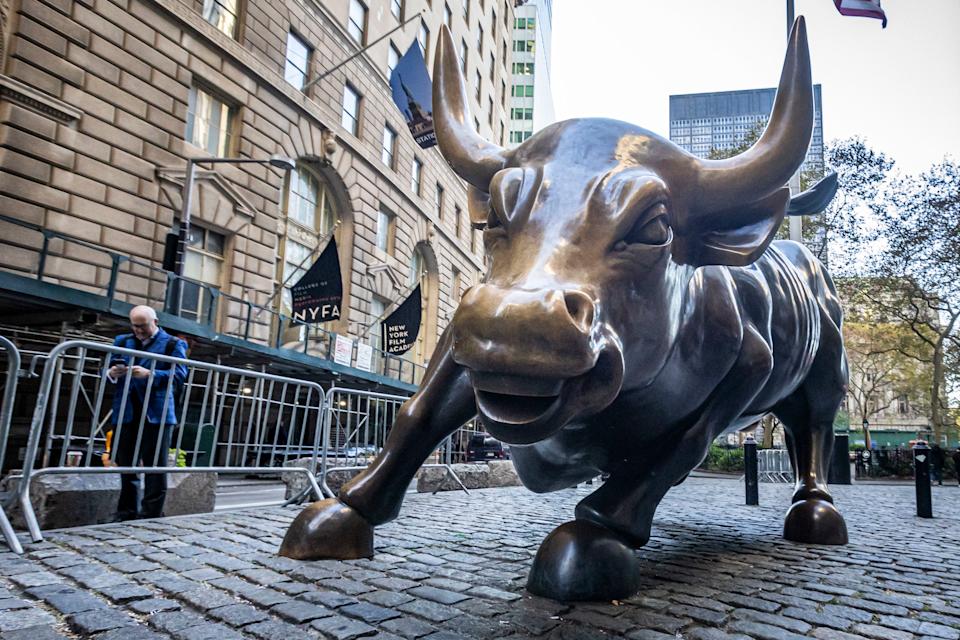Link copied
March jobs report expected to show hiring slowed, unemployment rate held steady before Trump's tariffs.
watchlist :: 2025-04-04 :: source - yahoo finance
By Josh Schafer
 Boston, MA - March 4: A construction worker places scaffolding in place
on the facade of the McKim Building in Copley Square. (Photo by David L.
Ryan/The Boston Globe via Getty Images)
Boston, MA - March 4: A construction worker places scaffolding in place
on the facade of the McKim Building in Copley Square. (Photo by David L.
Ryan/The Boston Globe via Getty Images)
The March jobs report is set for release as markets are in a tailspin following President Trump's stronger-than-expected tariff stance.
The Bureau of Labor Statistics' monthly jobs report is expected to show nonfarm payrolls rose by 140,000 in March, while the unemployment rate held steady at 4.1%, according to consensus estimates compiled by Bloomberg.
In February, the US economy added 151,000 jobs, while the unemployment rate moved up slightly to 4.1%.
Here are the numbers Wall Street is expecting Friday, according to data from Bloomberg:
Nonfarm payrolls: +140,00 vs. +151,000 in February
Unemployment rate: 4.1% vs. 4.1% in February
Average hourly earnings, month over month: +0.3% vs. +0.3%
Average hourly earnings, year over year: +4% vs. +4%
Average weekly hours worked: 34.2 vs. 34.1 in February
The jobs report comes as investors grow increasingly worried Trump's tariffs could slow economic growth and possibly push the US economy toward recession. Those concerns drove a stock market sell-off Thursday in which the S&P 500 (^GSPC) fell almost 5%.
"Risks around this report may be asymmetric," Morgan Stanley chief US economist Michael Gapen wrote in a note to clients previewing the event. "We think it would take a lot of employment growth to alleviate fears of a sharper slowdown in the economy, while a mildly below-consensus print could fuel those concerns."
To date, the labor market data has largely painted a picture of a jobs market that is cooling but not rapidly contracting. Hiring has slowed, but layoffs remain low.
Fresh data out Thursday from the Department of Labor showed 219,000 initial jobless claims were filed in the week ending March 29, down from 225,000 the week prior. Economists have been closely watching for a pickup in this metric to signal an increase in layoffs and potential slowing in the economy, but thus far those concerns haven't materialized.
Still, there have been several signs that the labor market has cooled significantly over the past year. On Tuesday, new data from the Bureau of Labor Statistics showed job openings hit their lowest levels since September and are hovering near their lowest level in over three years. Meanwhile, both the hiring and quits rates are near their lowest levels in a decade as worker turnover remains low.
"What we're seeing is basically firms are not laying off workers, and workers aren't quitting, and we're in this really stable equilibrium, but not a very dynamic one," ADP chief economist Nela Richardson told Yahoo Finance on Wednesday.
Given the recent sell-off on growth fears, the looming question for markets is whether Trump's policies will slow the labor market further. Economists aren't confident a clear read of those answers will come in Friday's report.
While the bulk of Trump's tariffs weren't in effect in March, expectations that more levies were coming may have had an impact on hiring.
"Unprecedented policy uncertainty might have weighed on hiring in March more than we think," Bank of America US economist Shruti Mishra wrote in a note to clients previewing the event. "Moreover, the effects of DOGE actions and immigration restrictions are likely to become more evident in the 2Q payrolls data."
Josh Schafer is a reporter for Yahoo Finance. Follow him on X @_joshschafer.
Source: Yahoo finance
This week top market trends.
-
Micron stock edges up as earnings beat lifts AI hopes
2025-09-24 :: companies :: yahoo finance





